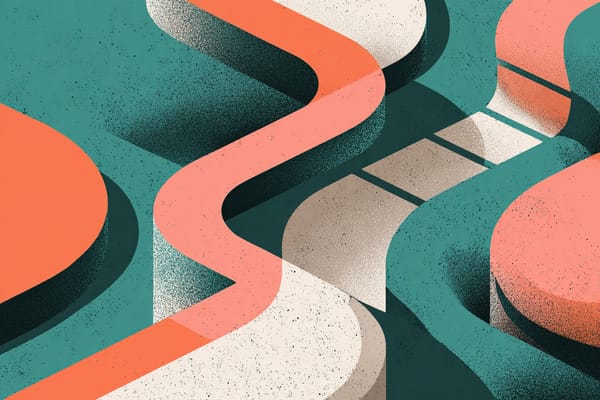When You Rush, You’re Easier to Push: The Hidden Cost of Impatience
“When you rush, you’re easier to push—and when you’re easier to push, you’re easier to lose yourself.”
If you’ve been freelancing, designing, or creating for any length of time, you’ve felt it—the urge to rush. A client emails, and you want to prove you’re on it before they even hit send. You get halfway through a design and start thinking, This has to be done today, or else…
But here’s the truth nobody tells you: when you rush, you become easier to push around.
Impatience feels like productivity. It feels like momentum. But often, it’s the start of losing your leverage, your clarity, and ultimately, your best work. Let’s dig into why.
Rushing Hands Away Your Power
When you’re rushing, you’re operating from a place of scarcity—whether it’s time, energy, or confidence. You start making decisions not based on what’s best but on what’s fastest.
In creative work, especially freelance and design, rushing hands your decision-making power to others:
- Clients get to dictate your schedule.
- Briefs are accepted without full understanding.
- Scope creep slips by because “there’s no time” to clarify.
- You undervalue your own ideas, assuming quicker = better.
The faster you move without deliberate thought, the more you become reactive instead of proactive. And a reactive creative is one who’s easier to nudge, pressure, and even manipulate—often without realising it’s happening.
Impatience Invites Poorer Outcomes
We’ve all seen it: rushed work is rarely our best work.
It’s full of missed details, uninspired ideas, and compromises that gnaw at us later.
More importantly, rushing short-circuits the creative process itself. You skip the part where a messy draft could evolve into something bold. You cut short the critical time needed to refine, rethink, and respond.
Instead, you deliver the first or second thing you thought of—not the fifth or fifteenth that might’ve been truly outstanding.
In a freelance or creative career, your reputation is often built not on how fast you deliver but on how thoughtfully you solve problems.
You Can’t Build Long-Term Confidence at a Sprint
Here’s the real kicker: when you keep rushing, you never actually learn to trust yourself.
Because when you rush, you’re constantly outsourcing your sense of timing and value to whoever is shouting the loudest—whether that’s a client, a deadline, or your own fear of falling behind.
In contrast, working with steady, measured urgency (not panic urgency) builds a deep, internal trust: I know how to get things done. I know when it’s good. I know when it needs more work.
This kind of trust is like a creative superpower. But you can’t build it when you’re sprinting from panic to panic.
Moving fast might feel productive, but unchecked urgency often means you’re reacting, not choosing. When you rush, you hand over your power—to clients, to trends, to fear.
Slow isn’t lazy. It’s intentional. And that’s how you protect your best work.
So, What’s the Alternative?
It’s not about slowing down for the sake of slowing down. It’s about slowing your thinking even if your hands move fast.
Some practical shifts:
- Pause Before Accepting: When a new project or request comes in, stop for a beat. Review it. Think about what’s really being asked—and whether you agree with it.
- Set Your Own Timelines: Even if a client suggests a deadline, double-check it against your own capacity. Propose a timeline that gives you the breathing room to do the work properly.
- Build a Margin: Always budget a little extra time into your schedule. Not for emergencies—for thoughtfulness.
- Separate Urgent from Important: Urgent emails, urgent edits, and urgent meetings—they’re rarely as important as you think. Prioritise based on impact, not just noise.
And maybe most importantly: practise the uncomfortable skill of waiting.
Waiting before sending that rough draft. Waiting before replying “yes” to a rush job. Waiting just a little longer to polish your best idea before you hit “send”.
Final Thought
As freelancers, designers, and creatives, it’s easy to think the hustle is what keeps us alive.
But the truth is, it’s the patience with your own process that keeps you strong.
When you rush, you’re easier to push—and when you’re easier to push, you’re easier to lose yourself.
Fight for your pace.
It’s not laziness. It’s professionalism.
And long-term, it’s what separates creatives who thrive from those who burn out.
Take the time you need—and then take a little more.
Your pace isn’t a weakness. It’s your advantage.
Until next time,
—Gary



